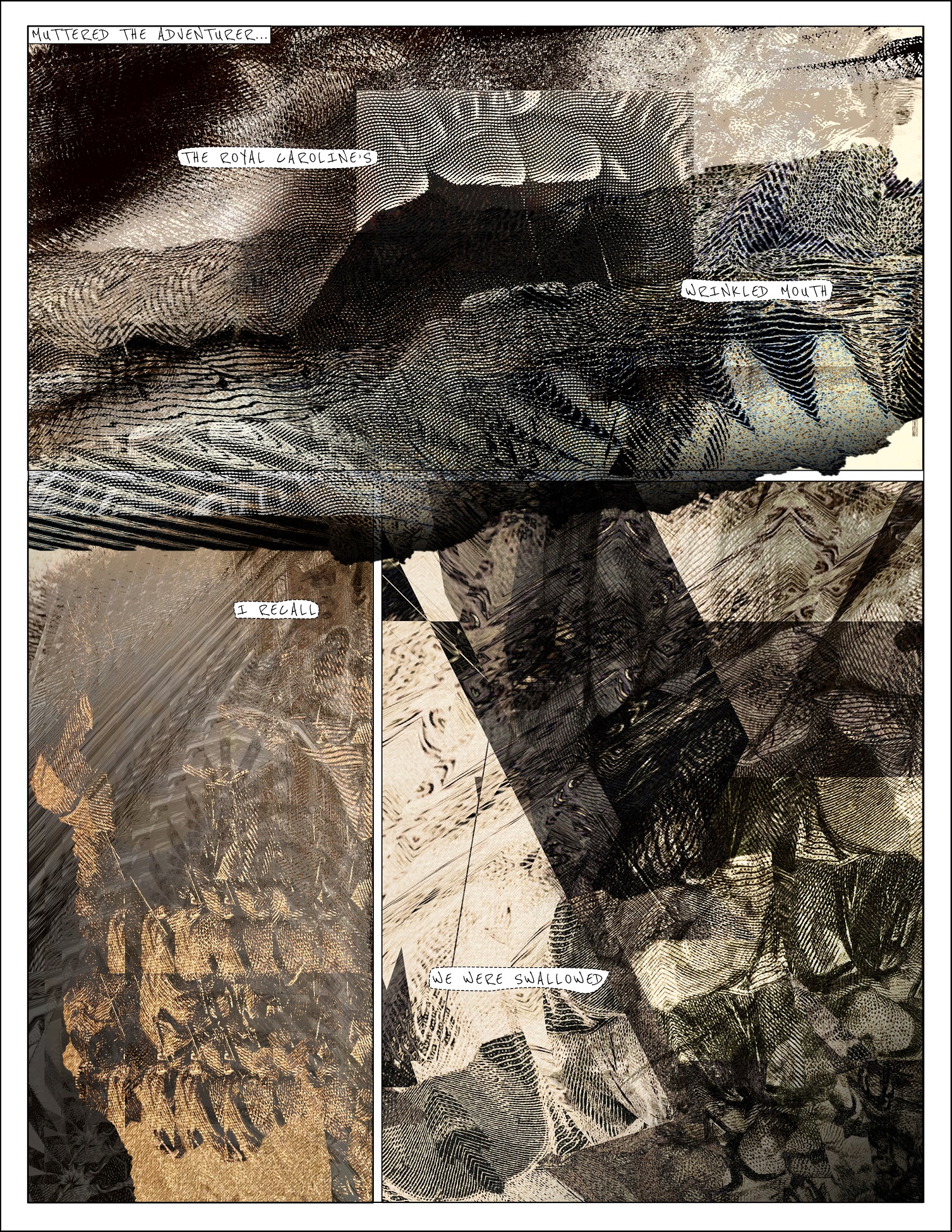
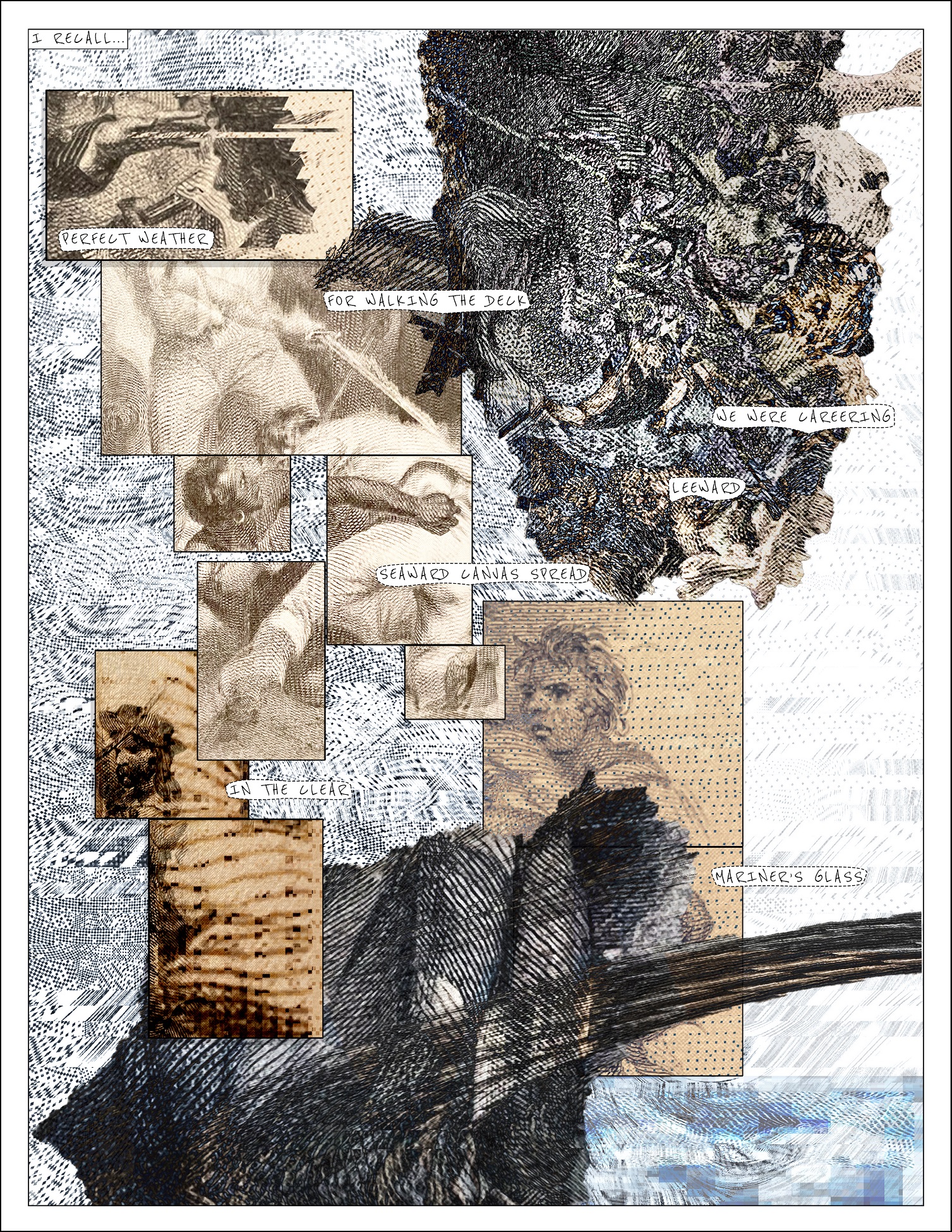
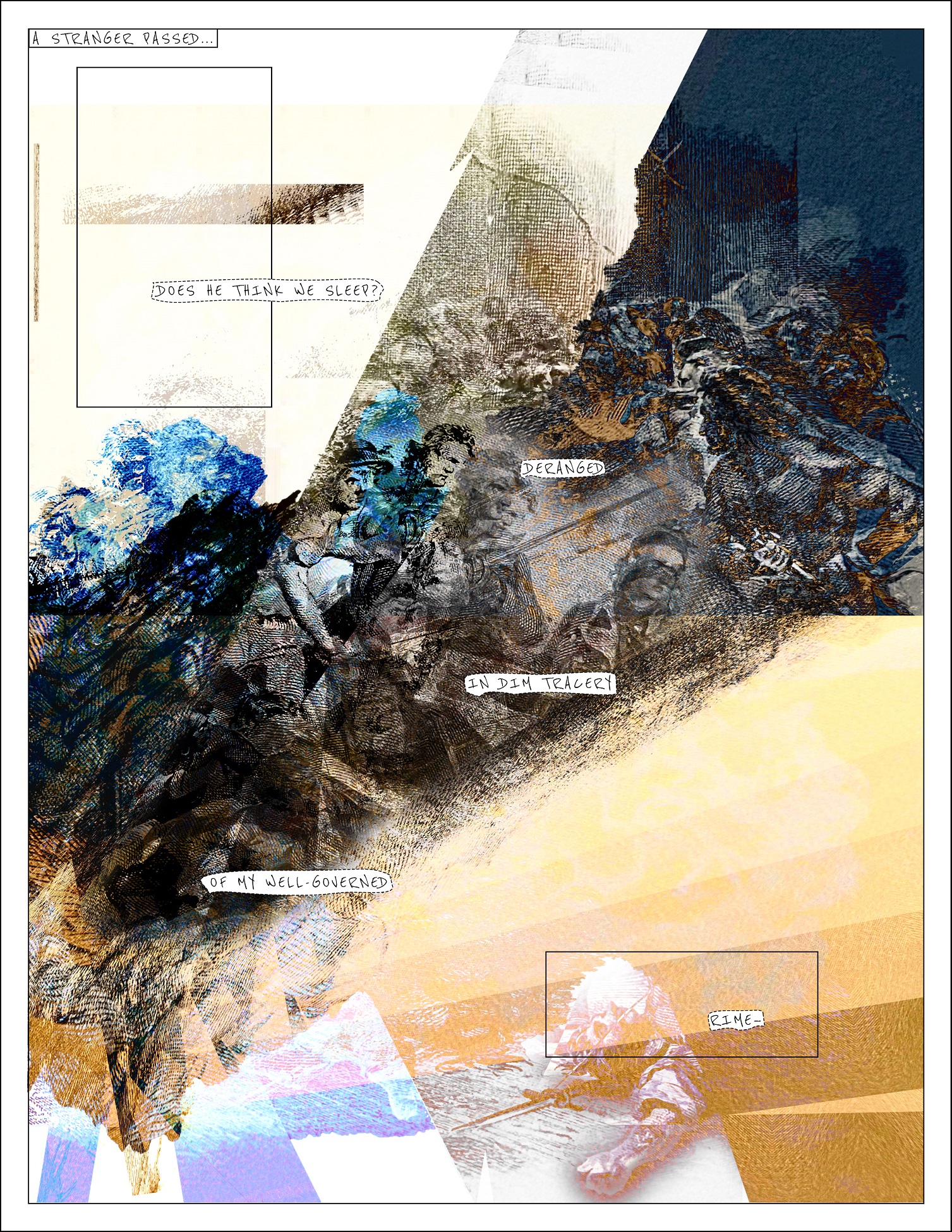
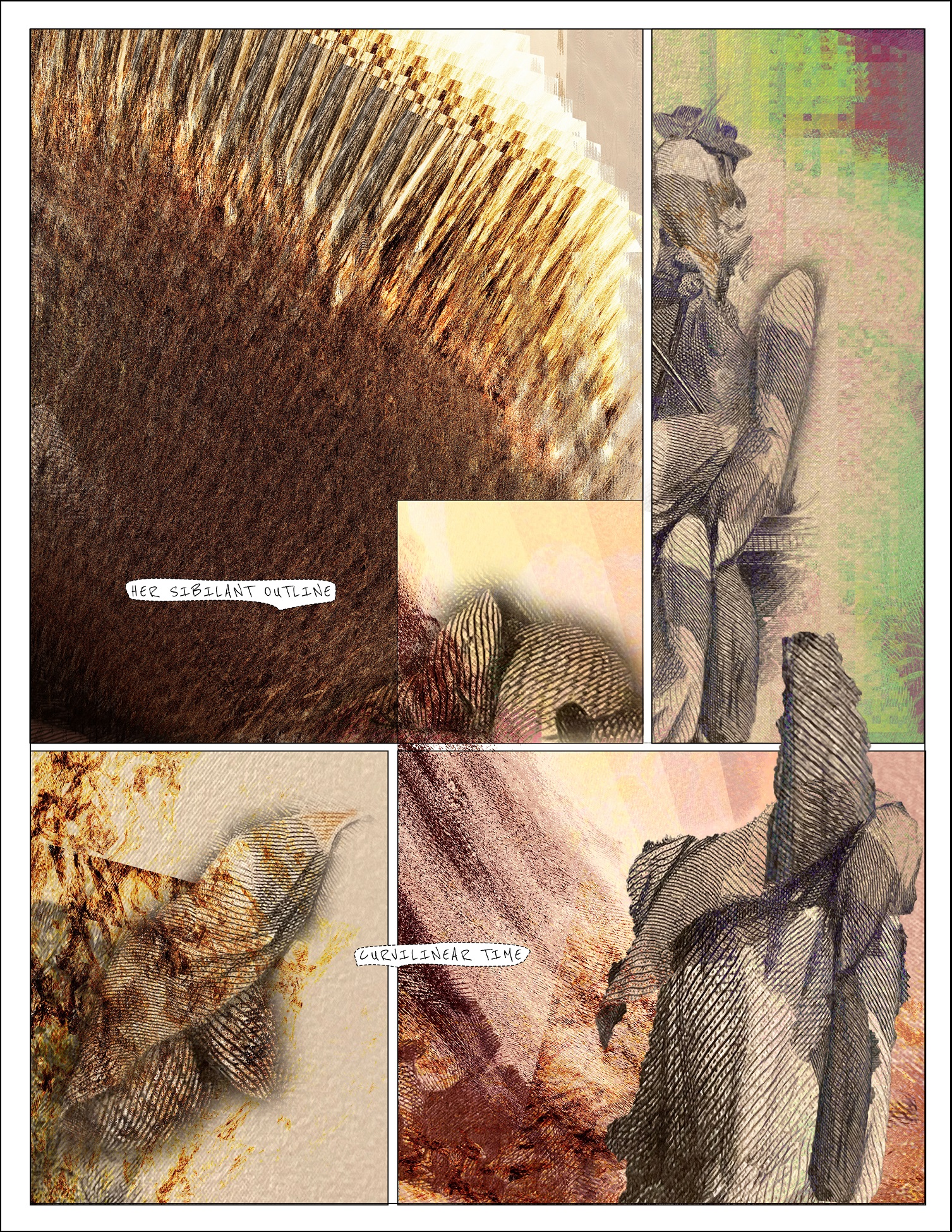
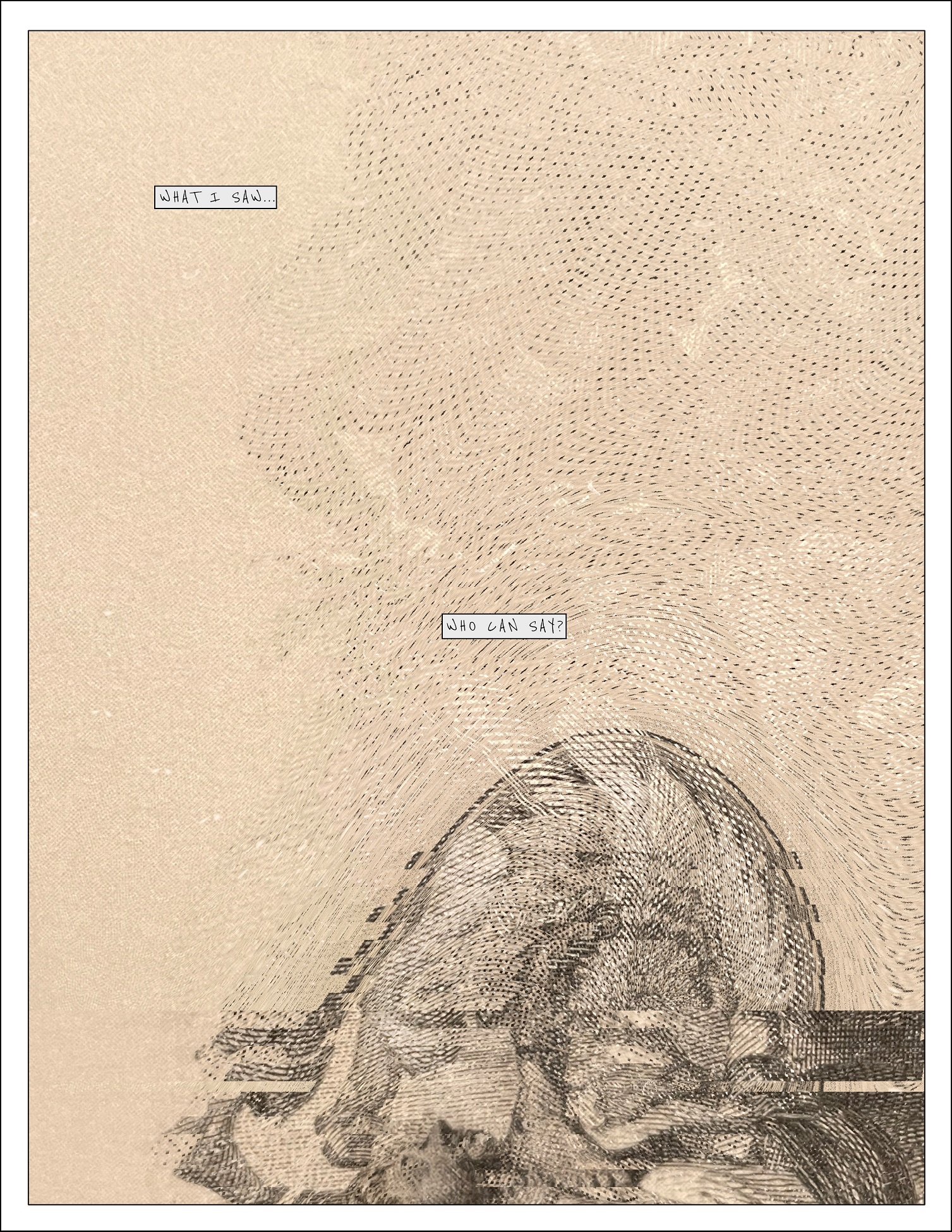
Note: “Wreck of the Royal Caroline” is from Hist forthcoming from Calamari Archive (late summer 2022).
A Journal of Hybrid Literature and Art





Note: “Wreck of the Royal Caroline” is from Hist forthcoming from Calamari Archive (late summer 2022).
What was your process for creating this work?
MK: I found the book: an odd volume of Fenimore Cooper excerpts (“The Wreck of the Royal Caroline” being one) published for a private corporation in the ‘80s. There was nothing on the cover, and the spine was obscurely labeled Chapters. As happens, a homework assignment from the universe, it seemed like the beginning of a poem. So I gleaned, like I do, chapter by chapter, one eye half open, ripping text, arranging and manipulating text, pretty freely associating into a series of skeletal sound sketches. And then I went to James and gave him a homework assignment.
JB: Matthew and I collaborated before on a multimedia book called Canyons, so his text sparked my interest again. He loaned me the source text, which contained 2-3 steel engraved images at the beginning and end of each chapter. These were meant to encapsulate the chapter’s main motifs, but for me they became leaping off points. I scanned each one into a wonderful glitch app called Decim8, which randomly distorts, repixelates, colorizes and fragments photos. When I had 30-40 for each chapter, I started to layer, handpaint, draw, filter, and collage them into comic book panels in Photoshop. Matthew’s text was skeletal, so the graphic narrative dimension became a way to interact with the sparseness, to add visual joints and musculature, often in dynamic contrast to the discreteness of his phrases.
What is the significance of the form/genre you chose for this work?
MK: I hadn’t imagined this poem as a graphic novel until I saw James’ initial pages. But then like, yeah, you know, totally. The kinds of stories we were pulling from: early 19th century American blockbusters populated with heroic rescues, bow-and-arrow chases, secret love affairs, prairie murders, haunting marauders, monstrous battles, historical shipwrecks, ritual offerings. I don’t know exactly what James was thinking, but for me, the comic book model helped to reincarnate the text sketches into a whole new cast of abstracted characters and conflicts.
JB: Some of my earliest memories are reading old comics at my grandparents. There was no way they knew how many zombie army men, crazed cannibals, and X ray specs I encountered! I read and teach them now, mostly in graphic novel form. Formally, comics panels manipulate time spatially, in singular ways, so that was important to visualizing the work. Matthew’s text was rich with lurking melodrama, and for me, graphic narrative’s capacity to display alternate temporalities discreetly but simultaneously allowed the imagery to weave in and out of that melodrama without fulfilling its hyperbolic push toward recognizable sentiment. As Matthew mentioned, the original book was populated with a blockbuster energy, but I like to think we’ve deformed that energy into a host of minor monsters, abominations, and affective forces all vying to materialize in a variety of times and spaces.
What is the significance of this work to you?
MK: Despite all of the cultural and political resonances of Cooper, I don’t think I’ll delve too deep here, except to say, all poems, in their way, are after answering the question of significance. I’ll add, though, that the word “significance” appeared in an early version of chapter two: “Canoe Chase on the Horican.” My line was: “We wind our way / through silent wilderness / striking distance / striking significance / finally.” And James, who made only a few textual edits, couldn’t abide “significance.” Too heavy-handed? empty? final? He changed it to “skrimmage”: a confused struggle.
JB: But Matthew, isn’t the process of signifying always a skrimmage! Poems record scrimmage! Or at least, some poems do and, I would say, Hist does. For me, that scrimmage is energetic and is where a work takes shape. Hist plots that process; our attempt to grapple with some of these cultural and political resonances that emerge from the peculiar intensities in early blockbuster Americana.
Matthew Klane is co-founder of Flim Forum Press. He has an MA in Poetics from SUNY Buffalo and an MFA in Poetry from the Iowa Writers' Workshop. His books include Canyons (w/ James Belflower, Flimb Press 2016), Che (Stockport Flats 2013) and B (Stockport Flats 2008). An e-chapbook from Of the Day is online at Delete Press, an e-book My is online at Fence Digital, and a chapbook Poetical Sketches is available from The Magnificent Field. He currently lives and writes in Albany, NY. See: matthewklane.com.
James Belflower is Teaching Assistant Professor at Siena College. As an interdisciplinary poet/critic his work investigates how language mingles us with matter. He is the coauthor of the multimedia project Canyons (Flimb Press 2016) with Matthew Klane, The Posture of Contour (Spring Gun Press 2013), Commuter (Instance Press 2009), and Bird Leaves the Cornice, winner of the 2011 Spring Gun Press Chapbook Prize. His work appears, or is forthcoming in: Postmodern Culture, Journal of Modern Literature, Diagram, PulpMouth, & New Delta Review, among others. He currently serves as content developer and graphic designer for Fence Digital, the electronic publishing platform of Fence Books.